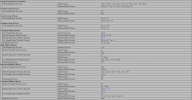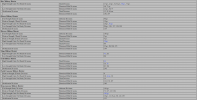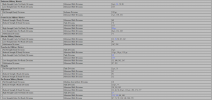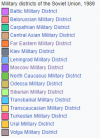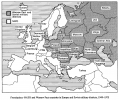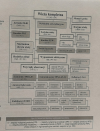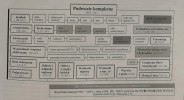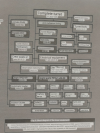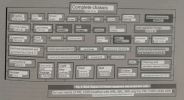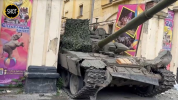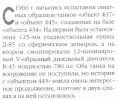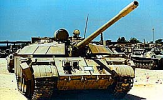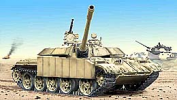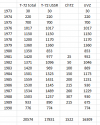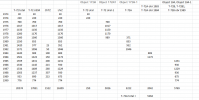T-80BV ja T-80U tuotannosta Leningradin Kirovin sekä Omskin Transmash-tehtailla.
Lähde:
Омский завод транспортного машиностроения - Устьянцев С. - 2018
Omsk transport engineering plant - Ustyantsev S. - 2018
Teksti on käännetty kirjan sivuilta 90-100, konekäännös joten käännösvirheiden tai outojen sanavalintojen mahdollisuus on ilmeinen.
-
CHAPTER 4 THE SYMBOL OF THE SUPERPOWER
CHANNEL TANK
In 1976, a sharp turn took place in the fate of the Omsk Transport Engineering Plant - it received a new task that crossed out previous developments, but opened up prospects for such a reconstruction, which had never been dreamed of before.
On July 6, 1976, the Decree of the Government “On the Adoption of a Tank with a Gas Turbine Engine into Armament of the Soviet Army” was issued. Instead of the factory code "object 219.", the car was assigned the T-80 index. It appeared in the design bureau of the Leningrad Kirov Plant, its chief designer was N. S. Popov. The design was carried out on the basis of the Decree of the Central Committee of the CPSU and the Council of Ministers of the USSR on the creation of the T-64 tank with a gas turbine engine with a power of 1000 hp. dated April 16, 1968 - despite the fact that tank builders of Leningrad began work with gas turbine engines in the late 1940s [1].
To solve this daunting technical problem, Leningraders had to produce 158 different experimental machines, which passed 647,000 km in tests, that is, circled the equator 16 times [2].
In 1976-1977, the Kirov Plant produced the first 70 serial "eighties" - 30 and 40, respectively. Opportunities for further growth were limited; the enterprise did not have sufficient space and, moreover, received a serious civilian burden in the form of Kirovets tractors. Looking ahead, we note that the level of 100 tanks in Leningrad was reached only in 1983, and the maximum of 140 units was reached in 1988. Therefore, the all-powerful curator of the Soviet military-industrial complex D. F. Ustinew chose "Omsktransmash" as the main production base for the T-80. Moreover, this was done even before the official adoption of "object 219" into service, in the five-year plan for the production and supply of weapons and military equipment for 1976-1980 [3].
The car improved rapidly. The Omsk plant actually started production not of the T-80, but of a more advanced model - the T-80B tank (object 219R) put into service in 1978. At the turn of the 1970-1980s, it was the most advanced MBT of all those in service with the Soviet army. According to the coefficients of the military-technical level developed by the branch institute VNIItransmash, the T-80B exceeded the T-72 by 35% and the T-72A by 13% [4].
And it's not just the unique gas turbine engine. The T-80B was a tank of parameters limiting for the SOVIET industry. It collected all the best of what domestic factories could give at least in limited quantities - materials, fire control systems, other components and assemblies
For example, the 9K112 Kobra guided weapon system first appeared in 1976 on the Kharkov T-64B tank. Its missile fired through a cannon barrel with high accuracy hit targets at distances of up to 4 km, protected by armored steel with a thickness of up to 600-700 mm along the normal. However, the KUV received only a part of the newly built T-64B tanks, the rest were produced in the T-64B1 variant, without guided weapons. The KUV did not stand out at all for the Tagil tanks T-72 and T-72A. At the same time, without exception, all T-80B tanks had ECUs [5].
And this is no coincidence. Direct participants in the creation of the T-80 tank V.I. Kozishkurt and A.S. Efremov testify: “It is authentically known that the choice of dislocation of these machines was determined exclusively by political conjuncture. The large-scale production of the then newest T-80 tank was subordinated to the task of equipping units and formations of the Group of Soviet Forces in Germany with this formidable combat vehicle” [6].
In the early years, during the period of development of the "eighties" in the army, they were operated in the Leningrad Military District under the supervision of the designers of the Kirov Plant [7].
In January 1983, deliveries of T-80B tanks to the Group of Soviet Forces in Germany began. By January 1987, there were 838 "eighties", and in 1990 - already 2967 pieces. In the second half of the 1980s, T-80 tanks also began to arrive in the Northern Group of Forces, that is, in Poland [8].
Discussions about the advantages and disadvantages of diesel and gas turbine engines in relation to the tank have been going on for more than half a century, and there is no end in sight. However, everyone agrees that in northern and central Europe, the T-80 tanks found themselves in the most favorable conditions for themselves. Soft and very moist
The climate, the densest network of good roads and gas stations made it possible to fully reveal the highest dynamic qualities of the T-80. There is a well-known case when, during exercises in the GDR, “eighties” entered the German autobahn and began to overtake buses with tourists. At the strategic headquarters game according to the scenario of war with NATO, it was determined that T-80 tanks could go through all of Western Europe and reach the Atlantic already on the fifth day of hostilities. That is why the “eighties” got the nickname “Channel tanks” [9]. The only thing that could, if not stop them, then delay them, was the use of tactical nuclear weapons.
The T-80B tank in the 1980s became a real symbol of the military power of the USSR in its confrontation with the NATO bloc and, above all, with another superpower - the United States.
IMPROVEMENT T-80
Although the Kirov Plant did not shine with volumes release "eighties", its design the bureau remained in charge of the car but the efforts of Leningraders on the T-80B tank in the
early 1980s, gas turbine engines were introduced with powerful 1100 hp and upgraded cannon 2A46M-1. And in the middle of the decade in a series went modification of the T-80BV with a hinged dynamic protection "Kontakt-1" from cumulative shells and grenades [10].
And, finally, in November 1984, the T-80U tank (object 219AS) was put into service with a new fire control complex dubbed from the commander with a digital ballistic computer, a 9K119 guided weapon system with missile guidance laser beam, gas turbine engine with a power of 1250 hp. In addition, the vehicle was equipped with the second-generation dynamic protection <<Kontakt-5", which reduces the effect of not only HEAT, but also sabot projectiles, an air intake device and an additional GTA-18A power unit to provide energy in the parking lot when the main power supply is turned off engine [11].
True, it was not possible to deploy the serial production of the T-80U until the end of the 1980s. Only in Leningrad in 1989, 50 machines were built - and even then with an old gas turbine engine with a power of 1100 hp. In Omsk, the new machine was mastered only in 1991 [12].
KBTM also joined the work on the T-80. To begin with, in pursuance of a joint decision of the ministries of defense and the defense industry of November 20, 1981, the “object 644” was developed, manufactured and tested - the T-80B tank with a backup version of the power plant, that is, with a diesel engine V -84 in case of shortage of gas turbine engines in wartime. The design documentation was approved by the interdepartmental commission and deposited. The main constructor V. V. Shapovalov [13] was the author of this project. In 1984, the production of the commander's version of the T-80B began - the T-80BK tank ("object 630").
It was created and produced only in Omsk [14]. For the training of crews, a complex fire training simulator for the commander and gunner of T-80BV tanks was developed, manufactured, tested and introduced into serial production, as well as the class of the material part of this tank [15].
GREAT RECONSTRUCTION
The restructuring of the Omsk transport engineering plant to produce the most complex Soviet tanks turned out to be a very expensive task in every sense.
Firstly, the production of engineering vehicles based on the T-72 tank, which had been created for several years, had to be broken. By the Decree of the Central Committee of the CPSU and the Council of Ministers of the USSR dated July 27, 1977, this task was shifted to Uralvagonzavod, where it was planned to build a special building of engineering vehicles. However, its construction was delayed, so the first chassis for the IMR were assembled in 1982-1983 in tank shops; they were completed at the Novokramatorsk Mechanical Plant. In 1985, an initial batch of 5 BREM-1s went for testing. In 1989, an initial batch of MTU-72 bridgelayers was produced. Thus, for a number of years, engineering vehicles on a tank base did not enter the Soviet army at all [16].
Secondly, the reconstruction of the Omsk plant, provided for by the joint Decree of the Central Committee of the CPSU and the Council of Ministers of the USSR of June 27, 1976, turned out to be a very ambitious task and required a lot of effort and money. The new design task PZ-60 developed by the Institute 8 GSPI essentially meant the construction of another larger plant next to the old one, the construction area was to be 430 thousand m². In total, it was proposed to build new buildings: - hull and assembly and delivery
HOV № 12 and 13;
- shops of loading mechanisms No. 95;
- a block of workshops No. 19 with a thermal cutting department;
- buildings of mechanical assembly shops No. 7 and 8;
- thermal shop No. 16;
- tool shop No. 20;
- caterpillar tracks workshops,
- electroplating shop [17].
The general plan of the enterprise was carried out not in such a way as to minimize inter-shop transportation. The whole organization was based on the principle of direct-flow production processes with the manufacture of parts and assemblies in closed areas. The project provided for the best technologies and equipment known at that time. Among them are stands and tilters with a hydraulic drive, two-arc submerged arc welding machines, conveyor welding and assembly of housings. For the first time in the domestic tank building for the machining of the hull, CNC machining centers were introduced (in this case, foreign ones, by Berardi). OTs had tool magazines with 80 cells and devices for automatic tool change. In total, about 60% of all mechanical processing was assigned to the OC. For painting works, 6 conveyor lines with automated washing were designed. For the first time in the country, a section for robotic stamping was provided in the cold stamping shop using industrial robots “Cyclone 3B”. In general, according to the project, high-performance equipment was supposed to make up 68% of the entire machine park [18].
For the technological re-equipment of the plant in 1976, it opened its own branch of the branch All-Union Scientific Research Technological Institute, the head part of which was based in Leningrad. The scientific institution was headed by V.D., who was transferred from Nizhny Tagil. Antropov. Other enterprises of the industry already had similar branches: in Kharkov it was established in 1967, in Nizhny Tagil - In 1968, in Chelyabinsk - in 1975 [19]. The structure of the Omsk branch included the technological departments of procurement and mechanical assembly production, design departments for special equipment and tooling, control systems, commissioning and implementation sector. The branch was located on the premises rented from the plant. Looking ahead, we note that a number of developments introduced at the plant named after the October Revolution of the VNITI were awarded VDNKh medals [20].
Technological preparations for the production of the T-80 began at the end of 1977. The Department of the Chief Designer of Special Process Equipment in 1978-1982 alone created more than 600 projects of non-standardized equipment, assembly and test benches. In 1978–1980 alone, the plant manufactured 717 pieces of equipment [21].
Mobilization for the "eighties" went in all possible directions - party, trade union, Komsomol, various public "councils". Even the newspaper Zavodskiye Izvestia, which is usually sterile in its coverage of defense production, published several articles on the development of T-80 production. Of course, the name itself was not mentioned in the newspaper, the unconcealed substitution “product No. 4” was used [22]. In the middle of 1978, the assembly of the first gas turbine tank was to begin. By June, the first batch of parts was made, despite the lack of tooling [23].
By the end of the year, three machines were assembled, albeit with the use of Leningrad components. Further development of production is presented in the table compiled according to the GABTU data [24].
Mastering the production of T-80 tanks was marked by a high award: in 1981 the plant was awarded the Order of Lenin [25].
Alemman rivin käännös:
including commander
-
Muutamia ajatuksia tästä.
Yleensä kun Neuvostoliitossa tehtiin komentovaunuja, olipa kyse T-54K, T-72AK tai T-80BK niin vastuu vaunun suunnittelusta ja toteuttamisesta asetettiin yhden ja saman tehtaan vastuulle. Tämä tarkoitti käytännössä sitä että tämä yksi ja sama tehdas myös rakentaa kaikki nämä vaunut. Yllä lainatun perusteella ainakin T-80BK vaunujen osalta tämä vastuullinen tehdas oli Omsk. Oletan että koskisi myös T-80BVK vaunuja eli myös nämä kaikki olisi valmistettu Omskissa.
Tämä oli hieman shokeeraavampi kohta (alleviivaukset minun):
And, finally, in November 1984, the T-80U tank (object 219AS) was put into service with a new fire control complex dubbed from the commander with a digital ballistic computer, a 9K119 guided weapon system with missile guidance laser beam, gas turbine engine with a power of 1250 hp. In addition, the vehicle was equipped with the second-generation dynamic protection <<Kontakt-5", which reduces the effect of not only HEAT, but also sabot projectiles, an air intake device and an additional GTA-18A power unit to provide energy in the parking lot when the main power supply is turned off engine [11].
True, it was not possible to deploy the serial production of the T-80U until the end of the 1980s. Only in Leningrad in 1989, 50 machines were built - and even then with an old gas turbine engine with a power of 1100 hp. In Omsk, the new machine was mastered only in 1991 [12].
-
Viitattu lähde [12]:
12. Справочные данные. Л. 209 // Музей «УВЗ»;
Карпенко А. В. Обозрение отечественной бронетанковой техники (1905-1995 гг.). СПб., 1996. С. 386.
Kääntyy muotoon:
12. Reference data. L. 209 // UVZ Museum;
Karpenko A. V. Review of domestic armored vehicles (1905-1995). SPb., 1996. S. 386.
HUOM: minulla on tämä Karpenkon kirja "Review of domestic armored vehicles (1905-1995)" mutta en osaa sanoa miksi tässä kohdassa on viitattu siihen. Kirja on mainio kokoelma Neuvostoliiton valmistamia panssarivaunujen ja muiden ajoneuvojen numeroita (pituus, leveys yms.) mutta siinä ei mainita sanallakaan eri vaunutyyppien valmistusmääriä. On toki karkea maininta "suunnitteluvuodesta" sekä "minä vuonna vaunu otettiin tuotantoon", ehkä viitattu kirjaan tästä syystä?
Oletan että vuosituotantomäärien varsinainen lähde on silti tämä "Reference data. L. 209 // UVZ Museum" mitä on tietysti mahdoton tarkistaa, paitsi jos käy penkomassa ko. museon arkistoja.
-
Olen aina ollut hyvin epäileväinen internetissä usein toisteltujen T-80U vaunujen valmistusmäärien osalta, koska kyseessä oli hyvin kallis ja monimutkainen kokonaisuus JA koska se tuli tuotantoon Neuvostoliiton viimeisten vuosien aikana.
MUTTA tästä epäluuloisuudesta huolimatta en olisi kehdannut esittää näin pieniä määriä, kuin mitä tässä sanotaan: Leningradin Kirovin tehtaan vuoden 1989 tuotanto (50 kpl) olisivat ainoat T-80U vaunut jotka valmistuivat ko. tehtaalla. Omskin tehdas puolestaan aloitti tuotannon vasta vuonna 1991. Lainasin aikaisemmin taulukkoa, joka kertoo Omskin uustuotannon aikavälillä 1991-1996.
JOS tämä pitäisi paikkansa, niin silloin T-80U vaunujen tuotantotahti olisi ainoastaan:
1989: 50 (LKZ tuotanto)
1990: 0
1991: 150
1992: 5
1993: 65
1994: 92
1995: 51
1996: 18
Aikavälin 1989-1996 kokonaismäärä olisi siis näiden summa eli 431 kpl.
Pari kommenttia tästä: on tietysti ilmiselvää että vaunuja valmistui jokin määrä aikavälillä 1984-1988 mutta puhuttaneen ns. esisarjasta eli harjoitellaan tuotantoa, tehdään testejä yms.
Tämän lisäksi syytä muistaa, että useimpien lähteiden mukaan viimeinen T-80U valmistui Omskin tehtaalta vuonna 2001. Miten monta vaunua valmistui aikavälillä 1997-2001? Tämä ei ole tiedossa, mutta vaunu ei koskaan saavuttanut vientimenestystä JA samaan aikaan Venäjä päätti keskittyä T-72 / T-90 perheiden vaunuihin mikä ei poistanut sitä tosiseikkaa, että T-80 perheen vaunut olivat merkittävässä asemassa osana heidän asevoimiaan koko 90-luvun ja 2000-luvun alun ajan. Koska vaunut olivat aktiivijoukkojen käytössä, niille teetettiin peruskorjauksia "armored repair plant" -pajoissa (ja arvatenkin osa näistä tehtiin myös Omskin tehtaalla).
T-80U ei ollut vientimenestys MUTTA vientiä kuitenkin tapahtui pienimuotoisesti: laadin aikaisemmassa viestissä taulukon venäläisen Kommensantin infograafista, sen mukaan T-80U vaunuja vietiin ulkomaille seuraavat määrät:
LINKKI
1992 - Iso-Britannia - 1 kpl
1996 - Etelä-Korea - 33 kpl
1996-1997 - Kypros - 41 kpl (T-80U ja T-80UK)
2005 - Etelä-Korea - 2 kpl (T-80UK - Omskin tehtaan konkurssin jälkeen joten eivät voi olla "uustuotantoa" vaikka olisivatkin uutta vastaavassa kunnossa)
Kommersantin taulukko päättyy vuoteen 2012.
Toisessa viestissäni oli SIPRI:n datan mukainen taulukko Venäjän viennistä, se sanoo vientimääristä näin:
LINKKI
1996-1997 - Etelä-Korea - 33 kpl
1996-1997 - Kypros - 41 kpl
2005-2006 - Etelä-Korea - 10 kpl
2010-2011 - Kypros - 41 kpl
Steve Zaloga kirjoittaa kirjassaan "T-80 Standard Tank The Soviet Armys Last Armored Champion" T-80 perheen vaunujen viennistä näin, lainaus ko. kirjasta sivuilta 34-35:
A handful of export orders for the T-80U did materialize, though they were fulfilled mostly by using undelivered inventory from the Omsk plant. Morocco acquired about five T-80 tanks in the late 1980s, ostensibly for testing for a future tank requirement; it is widely believed that they ended up in the hands of US, British, and German intelligence agencies. Russia sold Britain one T-80U in 1992 as a goodwill gesture connected with President Boris Yeltsin's visit to Britain in 1992. Sweden evaluated the T-80U for its tank competition starting in 1993, but finally settled on the Leopard 2. The Russian government owed South Korea a substantial amount of money from the Soviet period, and partly paid these debts through the sale of military equipment. The Republic of Korea Army received about 80 T-80U tanks from 1996 to 2005. These are used primarily by "opposing forces" units for training. Cyprus acquired 41 T-80U tanks, including 14 of the new T-80UK command tanks in 1996-97.
Omsk attempted to reinvigorate international interest in the T-80 by more elaborate improvements, including active protection systems as detailed below. Export sales were too small to keep the Omsk tank plant busy, and in spite of a few small state orders for tank rebuilding, the plant went bankrupt in 2006. At the time of writing, the Russian government planned to consolidate the tank business around Uralvagon in Nizhni-Tagil, with Omsk assigned tank rebuilding efforts as well as some design work. The Russian Army began to fund upgrades for its aging T-80 fleet in the 2007 defense budget.
Steve Zaloga kirjoittaa yllä olevassa lainauksessa että Etelä-Korealle olisi myyty 80 kpl, mutta oletan sen olevan virhe.
Toisen lähteen mukaan alunperin keskusteltiin 80 kpl T-80U vaunun antamisesta (velkojen kattamiseksi) mutta määrä supistui 35 kpl:
LÄHDE
The subsequent collapse of the Soviet Union and the impoverishment of the new Russian Federation made it impossible for Moscow to repay the loans in cash.
The Russian Federation began supplying tanks, combat vehicles, military helicopters, and other defense equipment to the South Korean armed forces as partial payment of the $2 billion debt to the ROK that Russia inherited from the former Soviet Union.
Under their terms, Russia provided the ROK armed forces with Soviet-era T-80U main battle tanks, METIS-M anti-tank missiles, BMP infantry fighting vehicles, Kamov Ka-32 transport helicopters, and Murena-E hovercraft. Although South Korea had originally planned to purchase 80 tanks, the ROK ended up buying only 35 T-80U tanks. South Korea also received 70 BMP-3 Infantry Fighting Vehicles from Russia.
En osaa sanoa, onko Venäjä todella myynyt Kyprokselle 2 x 41 kpl T-80U vaunuja, joista osa T-80UK.
Se on kuitenkin selvää että näitä vaunuja myytiin Kyprokselle 41 kpl 90-luvun puolivälissä. Myytiinkö myöhemmin lisää, pitää tarkistaa.
-
Jos käytetään Kommersantin numeroita, T-80U ja T-80UK vaunuja meni vientiin 77 kpl. Jos taas käytetään SIPRI:n taulukkoa, näitä olisi viety 125 kpl.
Laskin aikaisemmin aikavälin 1989-1996 uustuotannon kokonaismääräksi 431 kpl.
Tällöin Venäjällä itsellään voisi olla viennin jälkeen:
431 - 77 = 354
431 - 125 = 306
Pitää myös muistaa: Omsk haki aktiivisesti vientiä 90-luvulla ja vielä 2000-luvun ensimmäisinä vuosina, joten he varustivat muutamia vaunuja erikoisversioiksi, joilla houkuteltiin ostajia. Oletan että näitä varten on tuskin tehty kokonaan uusia vaunuja, jos pihalta löytyy uutta vastaavan kuntoisia aihioita. Tästä syystä valmistusmäärät aikavälillä 1996-2001 voivat olla hyvin pieniä, ehkä jopa yhden tai kahden käden sormilla laskettavissa.
Tästä seuraisi se että Venäjällä voi hyvinkin olla selvästi alle 400 kpl T-80U vaunuja, KOSKA näitä ei missään vaiheessa ehditty valmistaa tätä enempää.
Tämä selittäisi osaltaan sen, miksi Venäjän väitettiin olleen kiinnostunut ostamaan TAKAISIN Etelä-Korealle myymänsä T-80U ja T-80UK panssarivaunut (artikkeli julkaistu 14.9.2016):
LÄHDE
Vaunujen vähäinen määrä selittäisi myös sen, miksi näitä käytetään kimpassa T-80UE-1 vaunujen kanssa (joita on väitetysti valmistettu jotain 10-31 kpl välistä, sanoisin että näitä on todistetusti valmistettu 10 kpl mutta 31 kpl olisi looginen määrä, yhden panssarivaunupataljoonan verran - jos siis näitä olisi päätetty modernisoida suurempi määrä) JA miksi osana samaa joukkoa operoi heidän AINOA T-80UM2 prototyyppivaununsa (joka menetettiin Ukrainassa, tosin Drotz-järjestelmä oli poistettu käytöstä).
Ukrainan sodan aikana tuli vastaan tällainen näkemys / luulo / tieto:
LÄHDE
The Russians has to retire the T-90 (built 1997-2001) in the early 2010s and half of its T-80U (built 1988-1992) fleet in the late 2010s, mainly because these modern tanks were operated in high-readiness 1st-line units and were worn out.
Venäläisen Altyn73 mukaan Venäjän aktiivijoukoilla oli syyskuussa 2021 käytössään 2 x 93 kpl "T-80U and T-80UE-1" eli 186 kpl. Tosin jos lasketaan +1 vaunu per rykmentti eli rykmentin komentajalle vaunu, niin näitä olisi 2 x 94 kpl = 188 kpl.
Pitääkö ylle lainattu näkemys / luulo / tieto paikkansa edelleen? Onko T-80U vaunuista edelleen puolet "korjattavana"? Hän kirjoittaa että "late 2010s" mikä voisi tarkoittaa aikaväliä 2017-2019. Hyvin tuore tapaus ja lisäksi harvinaisempien vaunujen peruskorjaus on varmasti aikaavievä operaatio, vaatii myös erikoisempia varaosia (sama juttu mainittujen T-90 obr 1992 vaunujen osalta).
JOS pitäisi, kokonaismäärä olisi:
2 x 188 = 376
Selvästi alle 400 kpl, mutta enemmän kuin yllä laskemani 306-354 kpl.
Hän myös käyttää sanaa "retire" mikä voisi tarkoittaa että vaunut olisi otettu syrjään pidemmäksi aikaa - ellei jopa pysyvästi: sana tarkoittaa kirjaimellisesti jäädä eläkkeelle tai tässä yhteydessä oikeammin "laittaa eläkkeelle". Yleensä tämä tarkoittaa pysyvää asiantilaa eli ei olla enää palaamassa "työelämään". Olisi helppo uskoa, että näin on voinut käydä myös näiden vaunujen osalta: harvinaisia, vähälukuisia vaunuja, joten korjaaminen ja varaosien saatavuus varmasti ongelmallista - ainakin tiettyjen osien osalta. Aihiot olisi loogisempaa käyttää osana jotain modernisointia (T-80BVM, T-90M), sen sijaan että yritettäisiin korjata vanhaa ja "palauttaa alkuperäinen suorituskyky" (mikä olisi 30 vuotta vanha T-90 obr 1992 osalta ja T-80U osalta 40 vuotta).
JOS näitä vaunuja ei ole edes tarkoitus palauttaa aktiivijoukkojen käyttöön sopiviksi vaan ovat nykyisin pelkästään aihioita, jotka voidaan käyttää osana jotain modernisointiprojektia tai kannibalisoida käytössäolevien vaunujen varaosiksi - olettaen että näin ei ole jo tapahtunut: jotenkinhan nykyiset käytössäolevat vaunut on pidetty toimintakuntoisina. Miten päin tahansa asiaa haluaakaan katsoa, on hyvin mahdollista että Venäjän aktiivijoukkojen käytössä olevat T-80U ja "sen kaltaiset vaunut" ovat viimeiset jäljelläolevat - Altyn73 seurannan mukaan 186 kpl tai jos lasketaan mukaan rykmentin komentajan vaunut, 188 kpl.
Mistä päästään Ukrainan sotaan ja Venäjän vaunumenetyksiin. Oryxin tämän päivän numerot Ukrainasta (25.2.2023):
Katso liite: 74422
T-80U ja sen kaltaisia vaunuja on menetetty todistetusta tasan 100 kpl. Jokainen voi halutessaan lisätä haluamansa kertoimen niiden osalta, mitä ei ole nähty julkisuudessa. Ehkä jotain 20-30% väliltä.
Joka tapauksessa on selvää että Venäjän aktiivijoukot ovat menettäneet todistetusta vähintään puolet T-80U vaunuistaan, ehkä jopa 70%. Jos lainaamani juoru pitäisi paikkansa, heillä voisi olla "vajaa 200 kpl" jossain varastoissa odottamassa korjausta. HUOM: tässä ei lasketa Venäjän haltuun jääneitä T-80UD vaunuja, mutta niistä osa romutettiin ja otettiin tornit säästöön (osa torneista käytettiin T-80UE-1 modernisoinnissa), joten heillä voi olla tällaisia suolestettuja aihioita myös.
-
HUOM: näissä minun tuumailuissa ja tarjoamissa numeroissa on selvä ristiriita CFE-ilmoitusten datan kanssa - paitsi jos lasketaan mukaan T-80UD vaunut. Neuvostoliiton ilmoituksen mukaan sen joukoilla oli 410 kpl "T-80U-vaunuja" marraskuussa 1990 (katso aikaisemman viestin taulukko). JOS Leningradin Kirovin tehdas teki ainoastaan 50 kpl vuonna 1989 ja Omskin tehtaan ensimmäiset vaunut valmistuivat vuonna 1991, niin silloin ukrainalaisia T-80UD vaunuja pitäisi olla tämän ilmoituksen aikaan ainakin:
410 - 50 = 360 kpl
Edellisen viestin taulukon mukaan T-80UD valmistustahti oli:
1986: 50
1987: 55
1988: 125
1989: 150
1990: 170
Näiden summa on 550 kpl. Iso kysymys on tietysti, miten nopeasti näitä vaunuja toimitettiin armeijan panssarijoukoille? Hyvä muistaa myös tämä Steve Zalogan kommentti:
Total T-80 production was probably more than the 4,874 tanks reported under the CFE Treaty, as none were listed in the Ukraine, even though about 320 were at the Kharkov plant, and there were probably some T-80s at the Omsk tank plant as well.
Jos 550 kpl kokonaismäärästä "noin 320 kpl" oli tehtaan pihalla CFE-ilmoituksen antamisen aikoihin, niin se tarkoittaisi että "jossain muualla" pitäisi olla 230 kpl.
Toisaalta 230 + 50 = 280 kpl eli selvästi vähemmän kuin ilmoitettu 410 kpl.
Jokin ei siis täsmää tässä laskelmassa / logiikassa.

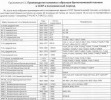
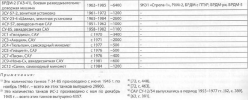
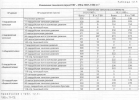
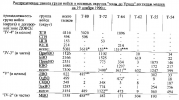



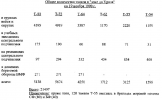
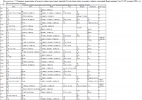
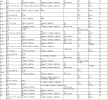
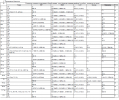

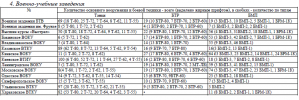



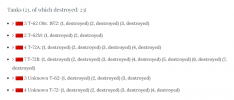
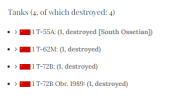
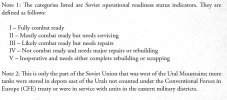
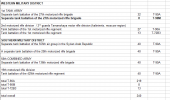
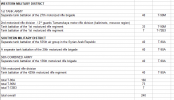
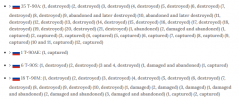
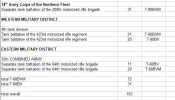


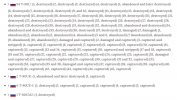








 .
.